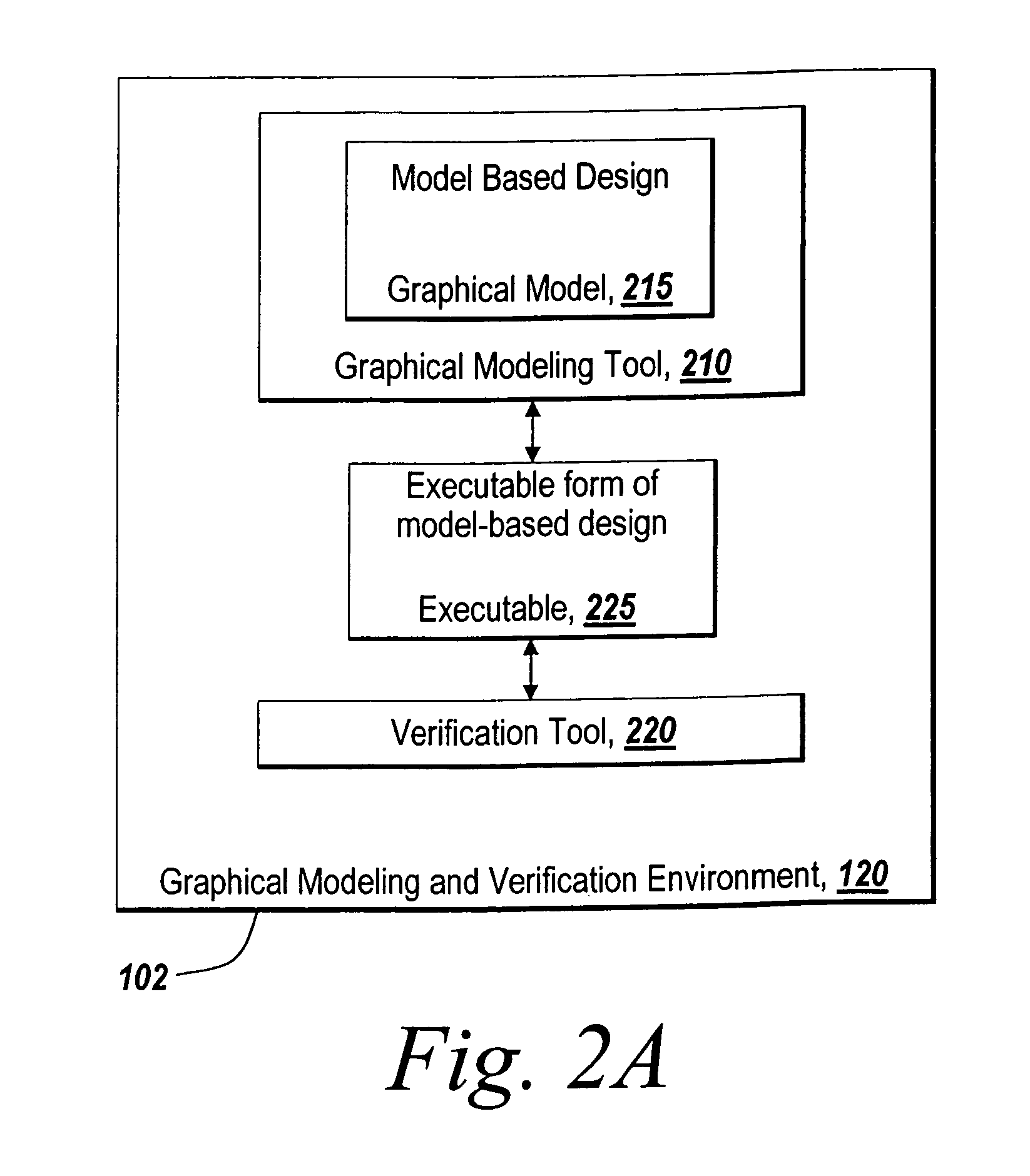Test postcondition items for automated analysis and test generation
a postcondition item and automated analysis technology, applied in the field of automated analysis postcondition item test generation, can solve the problems of time-consuming and resource-intensive, incomplete simulation, and inability to run comprehensive or multiple verification scenarios in a verification tool
- Summary
- Abstract
- Description
- Claims
- Application Information
AI Technical Summary
Benefits of technology
Problems solved by technology
Method used
Image
Examples
Embodiment Construction
[0038]The illustrative embodiment of the present invention provides systems and methods for using an element in a graphical model to represent and identify a postcondition for use by a verification tool in verifying an executable form of the design represented by the graphical model. The postcondition element provides a specification of a desired result or objective to be achieved or tested for by the verification tool in the verification of the design without affecting the behavior of the design. The postcondition element may not be incorporated directly into the model-based design represented by the graphical model but may be associated with graphical model elements as a design specification for verification. Additionally, the postcondition element may be configurable to provide different logics for the desired result and can be set to be active or inactive. As the graphical model may reference or otherwise have a hierarchy of graphical models, there may be multiple postcondition ...
PUM
 Login to View More
Login to View More Abstract
Description
Claims
Application Information
 Login to View More
Login to View More - R&D
- Intellectual Property
- Life Sciences
- Materials
- Tech Scout
- Unparalleled Data Quality
- Higher Quality Content
- 60% Fewer Hallucinations
Browse by: Latest US Patents, China's latest patents, Technical Efficacy Thesaurus, Application Domain, Technology Topic, Popular Technical Reports.
© 2025 PatSnap. All rights reserved.Legal|Privacy policy|Modern Slavery Act Transparency Statement|Sitemap|About US| Contact US: help@patsnap.com



